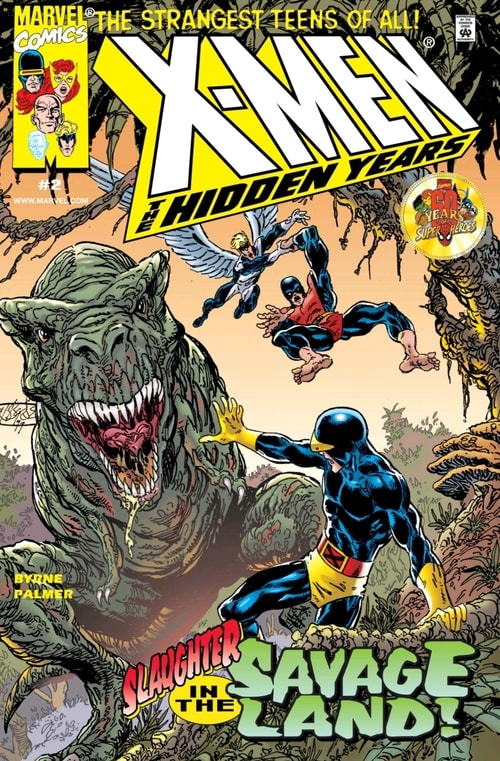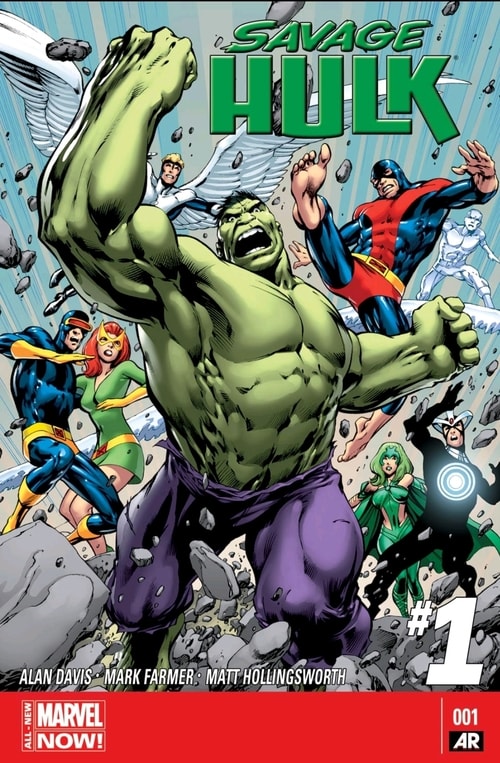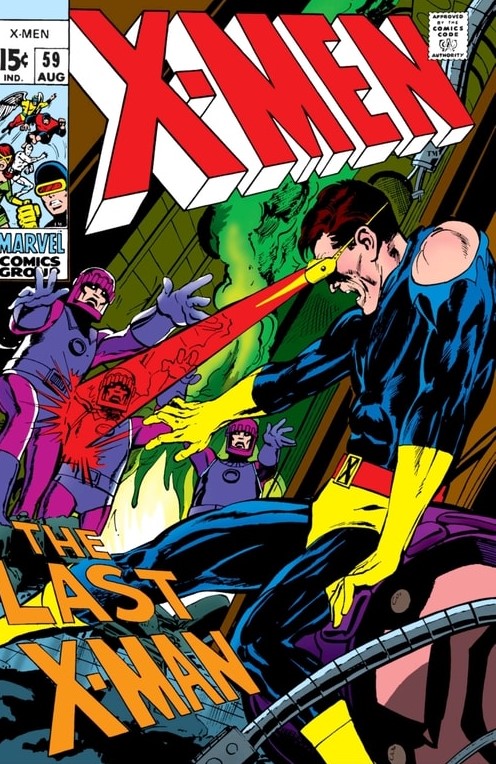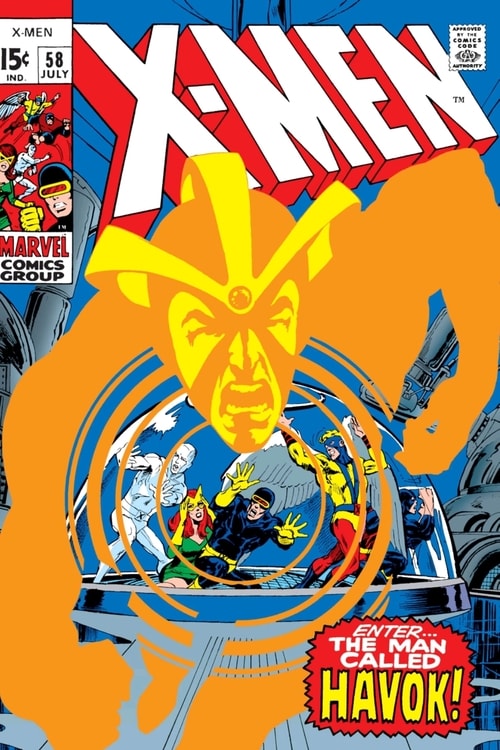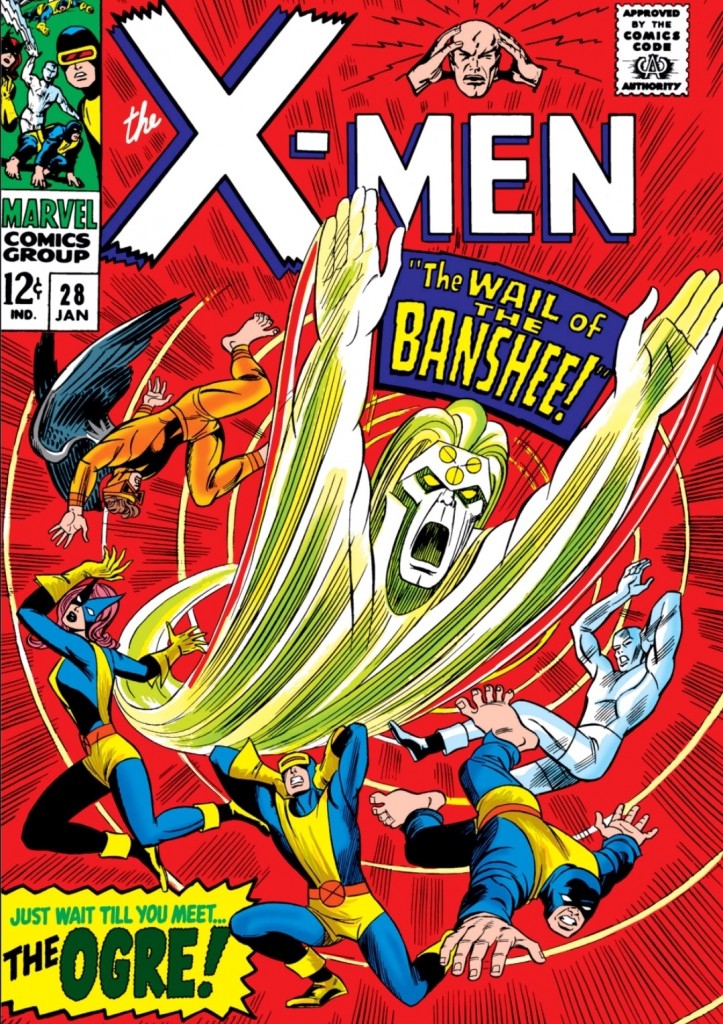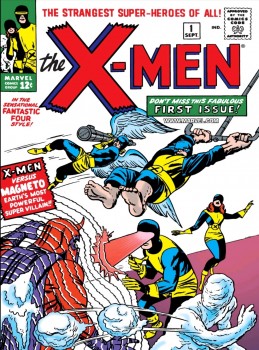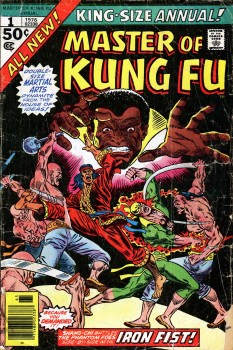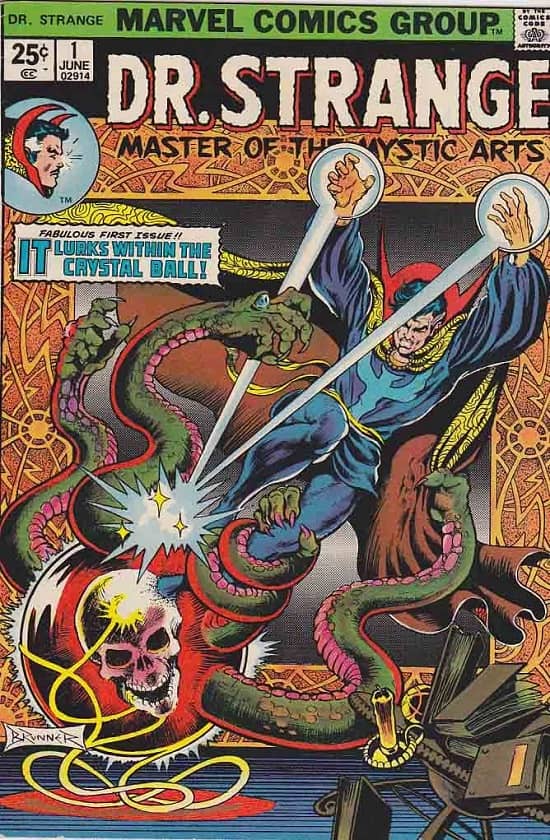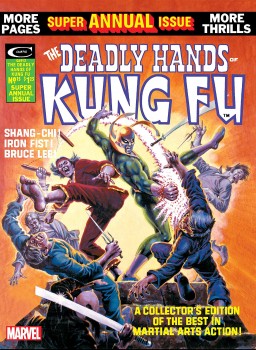 The continuing success of Warren Publishing’s Creepy, Eerie, and Vampirella led Marvel to relaunch its black & white magazine division in 1973. While the best of these Marvel Magazine titles supplemented the color comic line with material that could not easily be published in a monthly Code-approved title (Dracula Lives and Savage Sword of Conan, for instance) or offered unique material not spun-off as a companion title to a monthly (Planet of the Apes and Tales of the Zombie, among others), The Deadly Hands of Kung Fu sought a middle ground as a response to the martial arts craze that had taken America by storm on the silver screen, the small screen, comic books, and even the radio (Enter the Dragon, TV’s Kung Fu, Marvel’s Master of Kung Fu, and Carl Douglas’ novelty hit single “Kung Fu Fighting”).
The continuing success of Warren Publishing’s Creepy, Eerie, and Vampirella led Marvel to relaunch its black & white magazine division in 1973. While the best of these Marvel Magazine titles supplemented the color comic line with material that could not easily be published in a monthly Code-approved title (Dracula Lives and Savage Sword of Conan, for instance) or offered unique material not spun-off as a companion title to a monthly (Planet of the Apes and Tales of the Zombie, among others), The Deadly Hands of Kung Fu sought a middle ground as a response to the martial arts craze that had taken America by storm on the silver screen, the small screen, comic books, and even the radio (Enter the Dragon, TV’s Kung Fu, Marvel’s Master of Kung Fu, and Carl Douglas’ novelty hit single “Kung Fu Fighting”).
Master of Kung Fu may have been the lead feature at the start of the magazine’s run, but the title was never built solely around the continuing adventures of Shang-Chi alone. Articles, interviews, reviews, back-up strips, and reprints were just as important for a magazine that wanted not only to exploit the martial arts fad but also be taken seriously by martial arts students. For the purpose of our continuing series on Shang-Chi, we shall only be considering the black & white Master of Kung Fu strip that featured in most issues with passing reference to other material only where appropriate.
Deadly Hands of Kung Fu #1 launched in April 1974 with Master of Kung Fu as the lead feature written and illustrated by Shang-Chi’s creators Steve Englehart and Jim Starlin. Following just a few months after the character’s color comics debut in Special Marvel Edition #15, the story returned us to Shang-Chi’s early years in Honan, China when he trained as an assassin in service of his father. We see that as early as age fourteen, the seeds of doubt were sown in Shang-Chi as he questions the deadly violence of his martial arts training after learning from his mentor, Cho Lin that the assassins he dispatched who infiltrated the temple for the sole purpose of murdering the son of Fu Manchu were actually hired by his father as a lethal training exercise. The largest flaw here is that Starlin clearly drew Shang-Chi without knowledge that Englehart wanted him depicted as a fourteen year old. It is a nice touch to see that the deliberate manipulation of Shang-Chi by Cho Lin is intended as a slow fuse rebellion on his part. The monk recognizes that Shang-Chi will eventually reject his father’s doctrine and the deadly force that is Shang-Chi will be turned upon his maker.
…
Read More Read More
